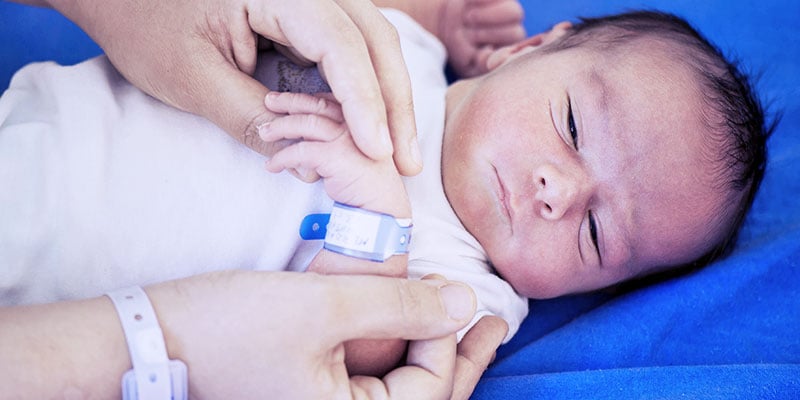 Babies are the most at-risk patients in a hospital. The National Center for Missing & Exploited Children (NCMEC) reported in 2008 that in the past 25 years, 252 newborns were abducted in the USA. Alarmingly, almost half of it – 123 cases – took place in an obstetric or pediatric setting. Considering the open environment in most hospitals, this data is hardly surprising: patients, family members, visitors, hospital staff, in addition to delivery, vendor, and construction workers are constantly in and out of these premises, 24/7, increasing the likelihood of in-hospital infant abductions.
Babies are the most at-risk patients in a hospital. The National Center for Missing & Exploited Children (NCMEC) reported in 2008 that in the past 25 years, 252 newborns were abducted in the USA. Alarmingly, almost half of it – 123 cases – took place in an obstetric or pediatric setting. Considering the open environment in most hospitals, this data is hardly surprising: patients, family members, visitors, hospital staff, in addition to delivery, vendor, and construction workers are constantly in and out of these premises, 24/7, increasing the likelihood of in-hospital infant abductions.
While most health administrators agree that a Code Pink — the code word to signal a baby abduction — is a rarity in medical institutions, it is still a threat that should be taken seriously by a hospital. Not only can it devastate the family involved and frighten the staff, but it can also represent catastrophic long-lasting consequences for the hospital’s image and reputation.
Preventing a Code Pink is, therefore, a top priority that requires prior planning, careful design of physical barriers, and the implementation of the right technologies in order to give peace of mind to families and caregivers when it comes to protecting newborn patients from the possibility of a stranger or even a family abduction.
Since a kidnapper might take only 4 seconds to leave a room with a baby, the use of an advanced infant tagging technology is imperative. Radio Frequency Identification or RFID is an automatic identification technology that helps prevent the “nightmare scenario” described above. RFID works by having a reading device scan a small electronic tag using radio frequency signals.
RFID-based security provides several unique advantages:
- The RFID tag can have a unique code which allows every tagged item to be individually accounted for.
- It reads information from a tag, without requiring line of sight scanning or human intervention.
- RFID reads simultaneously and instantaneously multiple tags.
- It stores greater amounts of information, which can be updated.
- It continuously monitors the baby's movements and can trigger alarms if the tag is loosened or cut-off from the newborn’s ankle.
- It offers configuration options. When an abduction alarm is set off the right people are notified.
- It makes data and reports easily available.
- The tags are more durable.
It is equally important to consider the following features when choosing the best solution to safeguard the infant population.
Comfortable: The tags must be comfortable on the infant’s skin. It is necessary to choose a material that feels soft and doesn’t cut or chafe their delicate skin. The tag should be small, lightweight, and easy to clean.
Reliable: False alarms are common when using obsolete solutions. The right choice for healthcare executives is one that uses RFID technologies since it allows data filtering and changing exciter frequencies to identify and eliminate potential noise issues thus eradicating false alarms. Similarly, the tags should adjust easily to the initial baby’s weight loss to avoid accidental dropping of the bracelet.
Independent: Further, it is crucial that the infant protection system is not dependent on a PC or server. Ideally, a secured perimeter and alarms continue to properly function, even in the case of a crash of the network or PC.
An effective infant protection system provides the right information at the right time to the right people. It should also be able to seamlessly integrate with the platforms and devices that already exist within the hospital. For instance, nurse call system, electronic access control (EAC), CCTV/camera system, pagers, beepers or any other mobile devices carried by caregivers, and iOS or Android devices.
RFID comes as a successful solution that helps decrease the risk of a Code Pink event in hospitals. Not to mention the palliative countermeasure it represents by making the new mom and her baby feel more secure.
